This is with plotly, as I mentioned in my comment. There are means of adding lighting and all that, but it won't every render quite like rgl. That being said, the colors looked pretty washed out. You will find that your original colors are in the comments next to the colors I used (should you want to change them back.
I used your foo data (but didn't reiterate the code here). I set the seed to 199, so that I would see the results consistently if you wanted to see the same output.
First, some setup:
- data for the planes (instead of using
background)
- layout content
- content repeated for each plane (lighting)
library(plotly)
# this data will be used for all three planes
planeXy = data.frame(x = rep(c(-1.1, 1.1), 2),
y = rep(c(-1.1, 1.1), each = 2),
z = rep(-1.1, 4))
# set names for the layout of the axes
aLbls <- list(title = "PC1", title = "PC2", title = "PC3")
# set styles that apply to all three axes
# you can set a background here (instead of mesh planes),
# but opacity attached to the hex is the only way to control it
# it didn't look right, so I added the planes
bkg <- list(range = c(-1.2, 1.2),
showgrid = FALSE, # hide grid lines
zeroline = FALSE, # don't emphasize the 0 line
tickangle = -45, # -45 degree angle (labels only)
showline = TRUE, # the outside line/connected to ticks
linewidth = 4, # thickness of th line in px
ticks = "outside", # so the ticks are seen with grid hidden
ticklen = 10, # default is 5px
tickwidth = 2, # line thickness of ticks
nticks = 5) # same meaning as your rgl plot
# set lighting for mesh planes (this is reused for each axis)
lights <- list(ambient = 1, # .7 for orig colors/ avail range is 0:1
specular = 1) # shininess/ avail range 0:2
# set light position for mesh planes (this is reused for each axis)
lightpos <- list(x = -.3, y = -.5, z = .1)
Here is the plot. It may look like a lot, but the three add_trace are nearly identical.
plot_ly(data = as.data.frame(foo), # change it back to a data frame
x = ~V1,
y = ~V2,
z = ~V3,
type = "scatter3d", # scatter plot
mode = "markers", # use points
showlegend = F, # no legend
name = "Foo Data Point",
marker = list(
size = 12, # point size
color = ifelse(foo[,4] == 1,
'#1F51FF', # '#636EFA', # original color
'#FF3131'), # '#EF553B')
# this gives the marker points a slightly darker outer ring
line = list(
color = ifelse(foo[,4] == 1,
'#2837a2', #'#45499f', # darker of orig color
'#BA0000'), # '#9a3b2a')
width = 1))) %>%
# add the planes, the only things that differ are
# the names, the arrang. of xyz and the delauney axis
add_trace(inherit = F, # xy plane
data = planeXy,
x = ~x,
y = ~y,
z = ~z,
facecolor = rep("#333777", nrow(planeXy)),
opacity = .6,
hoverinfo = "skip",
lighting = lights,
lightposition = lightpos,
name = "xy",
type = "mesh3d") %>%
# uses the same data, but the xyz is zxy
add_trace(inherit = F, # yz plane
data = planeXy,
x = ~z * -1,
y = ~x,
z = ~y,
facecolor = rep("#333777", nrow(planeXy)),
opacity = .6,
delaunayaxis = "x", # perpendicular plane
hoverinfo = "skip",
lighting = lights,
lightposition = lightpos,
name = "yx",
type = "mesh3d") %>%
# uses the same data, but the xyz is yzx
add_trace(inherit = F, # yz plane
data = planeXy,
x = ~y,
y = ~z * -1,
z = ~x,
facecolor = rep("#333777", nrow(planeXy)),
opacity = .6,
delaunayaxis = "y", # perpendicular plane
hoverinfo = "skip",
lighting = lights,
lightposition = lightpos,
name = "yx",
type = "mesh3d") %>%
# labels, axes, and initial perspective
layout(scene = list( # have to use scene when using 3D
xaxis = append(aLbls[1], bkg),
yaxis = append(aLbls[2], bkg),
zaxis = append(aLbls[3], bkg),
camera = list(eye = list(x = -1, # the initial view
y = -2,
z = .1))
))
Because plotly uses JSON, this should work regardless of where you view it. Let me know if you have any questions or if I missed something.
This is what it looks like for me:


